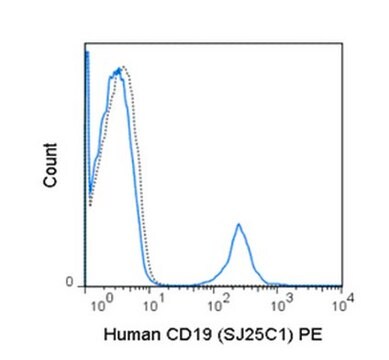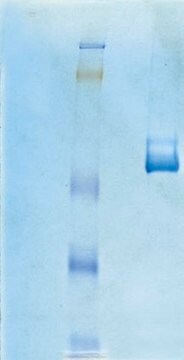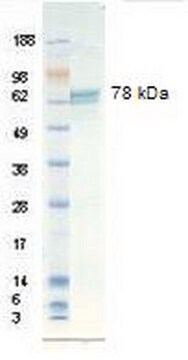ECM102
Human Vitronectin
MILLICOAT® Human Vitronectin Coated Strips (96-Wells), suitable for cell culture
Synonim(y):
Formerly under the CytoMatrix ™ brand name.
About This Item
Polecane produkty
Nazwa produktu
Millicoat® Paski powlekane ludzką witronektyną (96-dołkowe), Millicoat Cell Adhesion Strips are provided as 12 x 8-well removable strips in a 96-well plate frame for convenience & flexibility in designing assays.
pochodzenie biologiczne
human
Poziom jakości
Formularz
lyophilized
reaktywność gatunkowa
human
producent / nazwa handlowa
Chemicon®
Millicoat®
metody
activity assay: suitable
cell based assay: suitable
moc wejściowa
sample type pancreatic stem cell(s)
sample type induced pluripotent stem cell(s)
sample type hematopoietic stem cell(s)
sample type: mouse embryonic stem cell(s)
sample type: human embryonic stem cell(s)
sample type neural stem cell(s)
sample type mesenchymal stem cell(s)
sample type epithelial cells
numer dostępu NCBI
numer dostępu UniProt
metoda wykrywania
colorimetric
Warunki transportu
wet ice
Opis ogólny
Zastosowanie
UWAGA: Optymalny czas i wydajność testu mogą się różnić dla różnych linii komórkowych, ale ogólnie można je uzyskać przy użyciu subkonfluentnych hodowli komórkowych w teście opisanym poniżej. Hodowle subkonfluentne można uzyskać dzieląc komórki na 1 do 2 dni przed wykonaniem testu.
1. Nawodnić paski za pomocą 200 ml PBS na studzienkę przez co najmniej 15 minut w temperaturze pokojowej. Usunąć PBS z nawodnionych pasków.
2. Przygotować zawiesinę pojedynczych komórek, najlepiej przy użyciu nieenzymatycznego buforu dysocjacyjnego. Optymalną gęstość komórek można określić poprzez miareczkowanie komórek. Typowy zakres początkowy wynosi od 1x10E05 do 1x10E07 komórek/ml.
3. Dodaj 100 ml rozcieńczonej zawiesiny komórek do każdego dołka. Inkubować płytkę w temperaturze 37°C przez 45 minut w inkubatorze CO2. Delikatnie przepłucz płytkę 2-3 razy PBS zawierającym Ca2+/Mg2+ (200 ml/basenik).
4. Dodaj 100 ml 0,2% fioletu krystalicznego w 10% etanolu do każdego dołka. Inkubować przez 5 minut w temperaturze pokojowej. Usunąć barwnik ze studzienek. Delikatnie przepłucz paski 3-5 razy PBS (300 ml/basenik), aby usunąć nadmiar barwnika.
5. Dodać 100 ml buforu solubilizacyjnego (mieszanina 50/50 0,1M NaH2PO4, pH 4,5 i 50% etanolu) do każdego dołka. Pozostawić paski do inkubacji i delikatnie wstrząsać w temperaturze pokojowej, aż barwnik związany z komórkami zostanie całkowicie rozpuszczony; około 5 minut.
6. Określić absorbancję przy 540 - 570 nm na czytniku mikropłytek.
Cell Structure
Opakowanie
Przechowywanie i stabilność
Informacje prawne
Oświadczenie o zrzeczeniu się odpowiedzialności
Kod klasy składowania
11 - Combustible Solids
Klasa zagrożenia wodnego (WGK)
WGK 3
Temperatura zapłonu (°F)
Not applicable
Temperatura zapłonu (°C)
Not applicable
Certyfikaty analizy (CoA)
Poszukaj Certyfikaty analizy (CoA), wpisując numer partii/serii produktów. Numery serii i partii można znaleźć na etykiecie produktu po słowach „seria” lub „partia”.
Masz już ten produkt?
Dokumenty związane z niedawno zakupionymi produktami zostały zamieszczone w Bibliotece dokumentów.
Produkty
Extracellular matrix proteins such as laminin, collagen, and fibronectin can be used as cell attachment substrates in cell culture.
Protokoły
Ta strona obejmuje protokoły powlekania ECM opracowane dla czterech rodzajów ECM na wkładkach Millicell®-CM, kolagenu typu 1, fibronektyny, lamininy i matrigelu.
Powiązane treści
This page covers the ECM coating protocols developed for four types of ECMs on Millicell®-CM inserts, Collagen Type 1, Fibronectin, Laminin, and Matrigel.
Nasz zespół naukowców ma doświadczenie we wszystkich obszarach badań, w tym w naukach przyrodniczych, materiałoznawstwie, syntezie chemicznej, chromatografii, analityce i wielu innych dziedzinach.
Skontaktuj się z zespołem ds. pomocy technicznej







